Translating Scientific Research for Global Impact: Addressing Language Barriers in Life Science Communication

In the fast-paced world of scientific research, sharing discoveries globally is crucial. But language differences often stand in the way. This is especially true in life sciences, where medical breakthroughs and health advancements impact people worldwide.
The Criticality of Multilingual Communication
Effective multilingual communication is crucial for global collaboration in life sciences, which cover a wide range of fields like biology and medicine. Researchers from all over the world need to share ideas and work together to solve health problems.
Moreover, the ability to communicate life science research and health information in multiple languages is crucial for promoting public awareness, encouraging preventive measures, and enabling informed decision-making among diverse populations.
Overcoming Formidable Obstacles
Despite its critical importance, multilingual communication in life sciences faces several hurdles:
- Technical Complexity: Life science research involves complex concepts and specialized terminology, making accurate translation challenging.
- Cultural Sensitivity: Translating involves more than just words; it requires understanding cultural nuances to avoid misunderstandings.
- Limited Resources: Translating scientific literature requires significant time and financial investment, posing challenges for organizations with limited resources.
- Quality Assurance: Ensuring accurate translations is vital, particularly in fields like medicine, but it can be time-consuming and costly.
- Rapid Evolution: The ever-changing nature of science means translations must constantly be updated to reflect new discoveries and terminology.
Innovative Solutions for Better Communication
To overcome these obstacles and foster a more inclusive and impactful global exchange of life science knowledge, stakeholders must embrace innovative solutions and adopt best practices:
- Use Specialized Translation Services: These services employ experts in life sciences to ensure accurate translations.
- Build Collaborative Platforms: Platforms where researchers can share translated content can make sharing knowledge easier and more cost-effective.
- Standardized Terminology: Having agreed-upon terms makes translations more accurate and consistent.
- Embrace Technology: New technologies like machine translation can help streamline the translation process, but they need careful integration.
- Foster Cross-Cultural Competency: Understanding different cultures helps scientists communicate more effectively with diverse audiences.
Case Studies of Impactful Practices
- Example 1: Multilingual COVID-19 Resources
- During the COVID-19 pandemic, multilingual resource platforms were crucial in disseminating timely research and public health information, illustrating how rapid translation services can aid in global crisis management.
- Example 2: The European Molecular Biology Organization (EMBO)
- EMBO promotes excellence in life sciences in Europe and beyond by offering scientific publications and networking opportunities in several languages, thus enhancing collaborative research and information sharing.
Future Directions for Multilingual Scientific Communication
To foster a truly inclusive scientific community, the following strategies could be implemented:
- Multilingual Publishing Models: Encourage scientific journals to accept and publish research in multiple languages, providing abstracts or summaries in several key languages to increase accessibility.
- Supportive Policies and Funding: Governments and international bodies should develop policies that support multilingual research initiatives and provide funding for translation services and technology development.
- Educational Programs: Developing educational resources and training for scientists in effective cross-linguistic communication strategies could build a more inclusive scientific community.
The Role of DataGain in Bridging the Language Gap
DataGain, a leading translation service provider, plays a crucial role in overcoming language barriers in life science communication. With expertise in life sciences, we offer tailored solutions using advanced technology and expert translators.
Our rigorous quality assurance ensures accurate translations while our commitment to innovation allows us to deliver high-quality results efficiently. Moreover, our commitment to continuous innovation and the adoption of cutting-edge technologies enables us to deliver high-quality translations with increased efficiency and scalability.
By leveraging these technologies in conjunction with human expertise, we strike the perfect balance between accuracy and speed, allowing life science organizations to disseminate their research and findings to a global audience in a timely and cost-effective manner.
Conclusion
The path to fostering global collaboration and maximizing the impact of life science research is paved with effective multilingual communication. By addressing language barriers, the life sciences community can unlock the full potential of international cooperation, accelerate the dissemination of groundbreaking discoveries, and ultimately contribute to improving human health and well-being on a global scale.
By embracing the challenges and seizing the opportunities presented by multilingual communication, the life sciences can pave the way for a future where knowledge knows no borders and life-changing discoveries benefit humanity as a whole.

